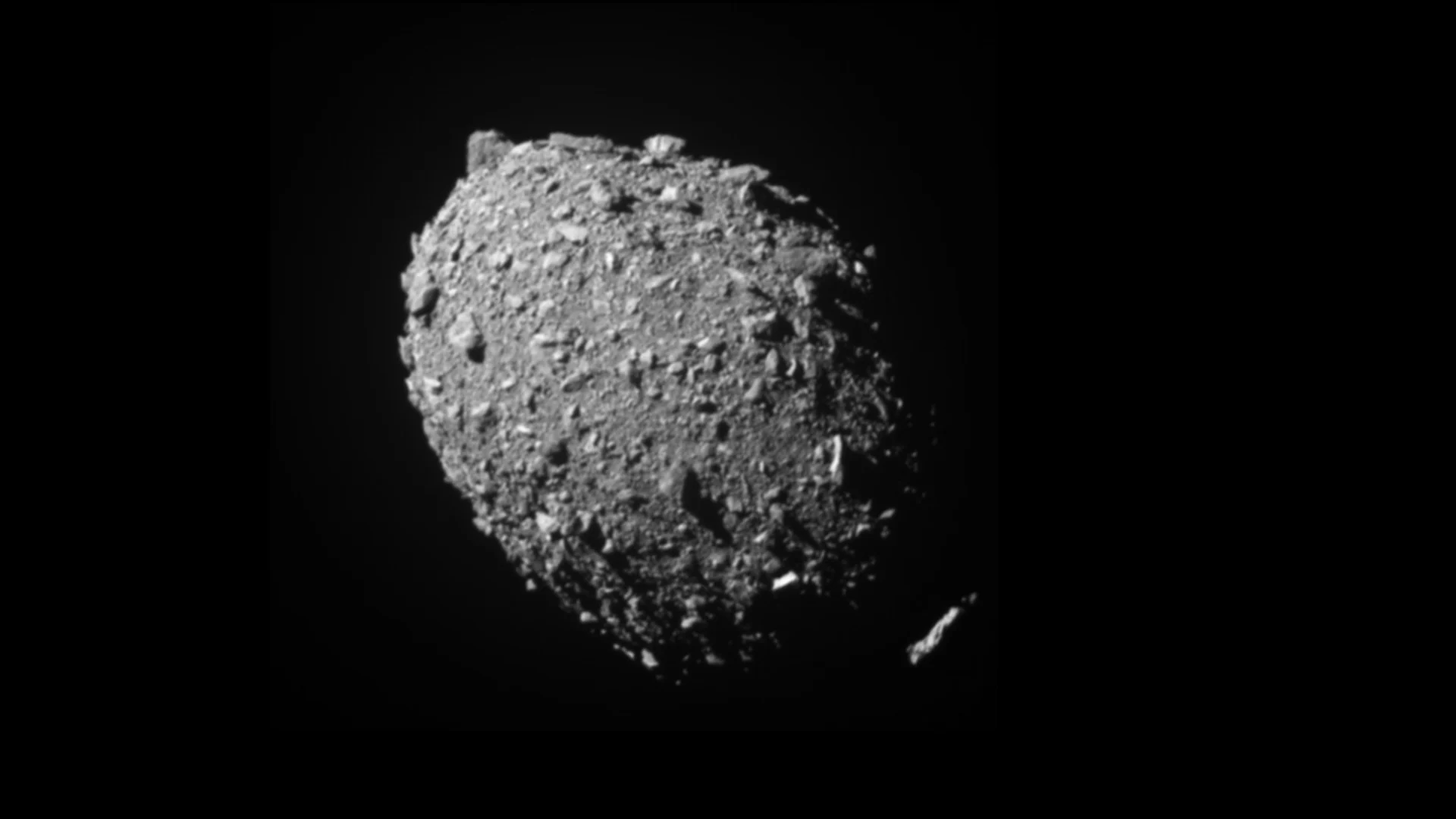
NASA successfully crashed DART into asteroid Dimorphos
Now it's up to astronomers to determine if this first planetary defence test was truly a success.
It was like a scene out of a science fiction disaster movie. On Monday night, scientists and engineers gathered around monitors in a NASA control room, cheering as the spaceship they launched 10 months ago successfully impacted with near-Earth asteroid Dimorphos.
There was one important difference between the very real scene that played out on September 26 and what we'd see in the movie. The team wasn't cheering because they saved Earth, as there was no impending peril from the asteroid they hit. They were simply excited because the spacecraft — NASA's Double Asteroid Redirection Test — successfully completed its mission, carrying out the first-ever planetary defence test.
DART launched into space in November 2021. Its goal: intercept the double-asteroid named Didymos and Dimorphos, automatically aim itself at the smaller of the pair, Dimorphos, and then crash into that asteroid at top speed.

NASA's DART spacecraft captured this image of asteroid Didymos (bottom right) and its moonlet, Dimorphos (centre), around 2.5 minutes before impact, at a range of about 920 kilometres. The double asteroid's 'north pole' is toward the top of the image. Credit: NASA/Johns Hopkins APL
The only scientific instrument carried by DART was its camera, DRACO, which stands for Didymos Reconnaissance and Asteroid Camera for Optical navigation. However, the images the camera took weren't intended to study Didymos or its moon, Dimorphos. DART's computer only needed the pictures for its autonomous navigation.
Still, it transmitted those images back to Earth so that the mission team could keep track of it. On Monday night, the public was treated to a live stream of what DRACO captured, as DART closed in for impact.
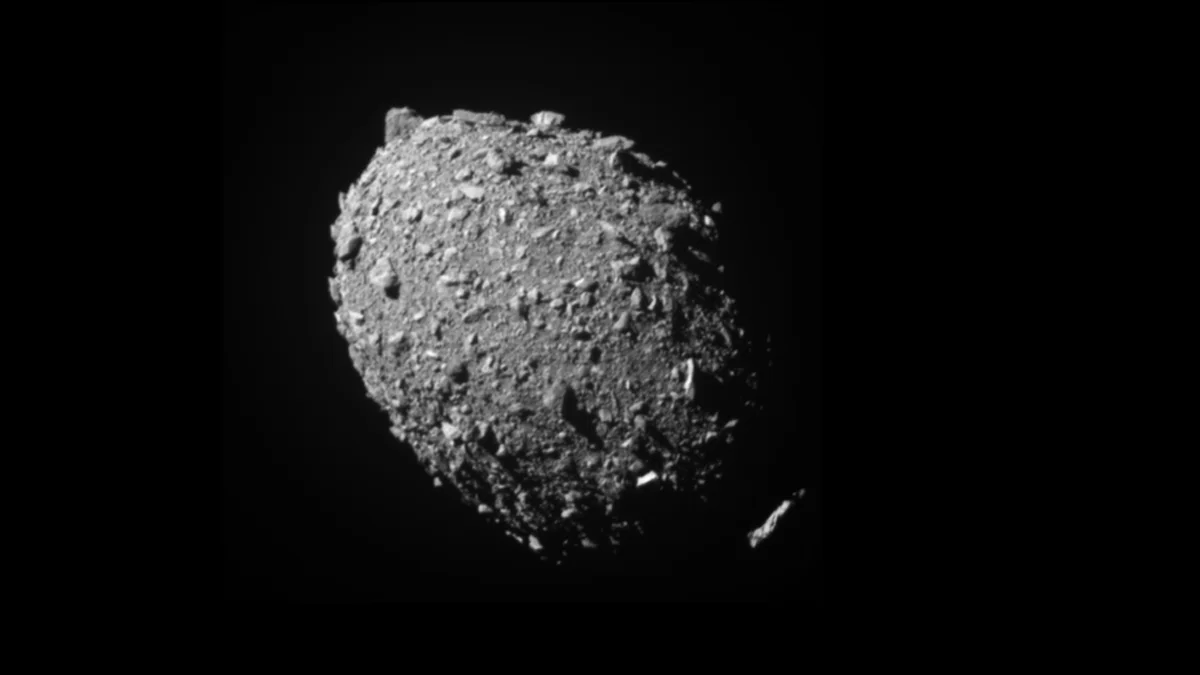
Asteroid moonlet Dimorphos as seen by the DART spacecraft's DRACO camera 11 seconds before impact (68 kilometres out). This image was the last to contain all of Dimorphos in the field of view. Credit: NASA/Johns Hopkins APL
From here on Earth, telescopes spotted the cloud of debris that was blasted off Dimorphos on impact.
Also following the impact, a tiny Italian cubesat named LICIACube took close-range images of Didymos and Dimorphos, so that the team could see what happened.
Carried along on the mission by DART, LICIACube was released to fly on its own on September 11, and it snapped pictures as it passed through the Didymos system, shortly after DART completed its mission.
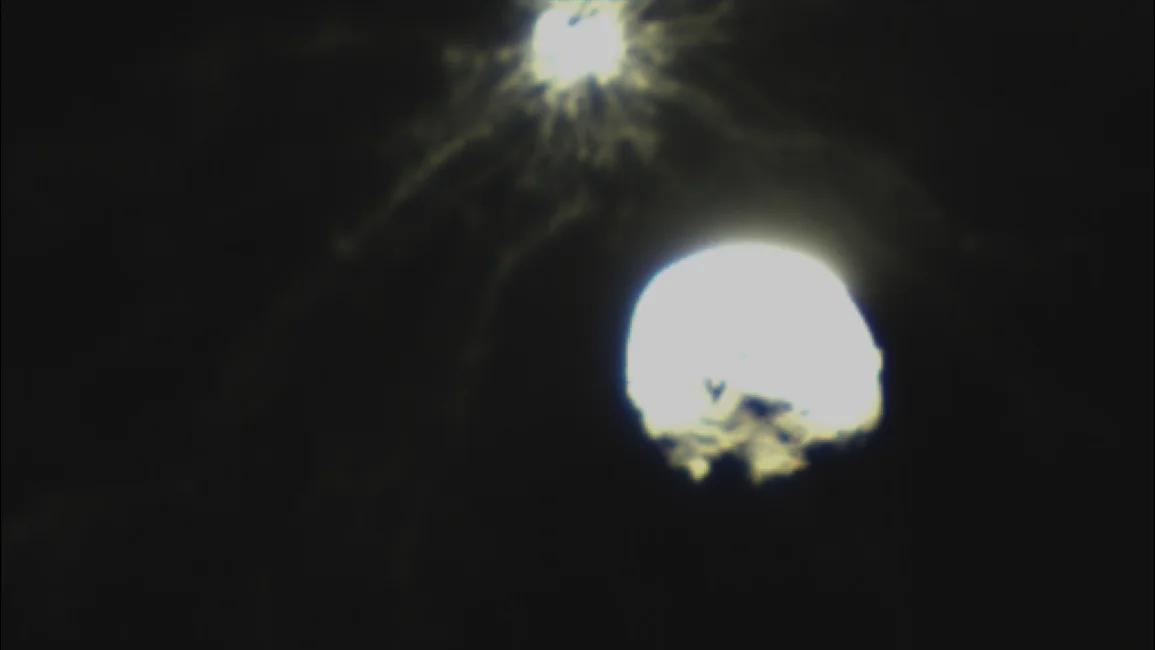
This image was captured by the LUKE (LICIACube Unit Key Explorer) instrument, on board the Italian Space Agency's LICIACube cubesat, a few minutes after DART impacted with Dimorphos on Sept. 26, 2022. Credits: ASI/NASA
LICIACube is an abbreviation of Light Italian Cubesat for Imaging of Asteroids. The cubesat carries two instruments on board: LEIA (LICIACube Explorer Imaging for Asteroid), a narrow field panchromatic camera used for long-range high-resolution imagery, and LUKE (LICIACube Unit Key Explorer), a wide field colour camera with an infrared filter for post-impact imaging of the double asteroid.
Now, all that's left is for astronomers to take careful observations of the asteroid pair, to see if there is any change in how long it takes Dimorphos to orbit around Didymos.
Why??
So, what was the point of this? Why did NASA fly a vending-machine-sized probe 11 million kilometres through space only to immediately smash it into a rock?
So far, humans have been pretty lucky when it comes to asteroid encounters. We've had a few that were scary. A couple exploded in the atmosphere, causing damage (notably on June 20, 1908, over the Podkamennaya Tunguska River, and on February 15, 2013, over Chelyabinsk, Russia).
However, we only need to look back around 66 million years (or check out the K-Pg boundary in sedimentary rock layers) to see how bad things could get. At that time, an asteroid or comet, roughly 10-15 kilometres wide, slammed into Earth along the north side of what is currently the Yucatan Peninsula. The impact produced a blast wave that wrapped around the planet, and this, along with the disruptions to the climate that followed, resulted in the extinction of around 75 per cent of all species on Earth.
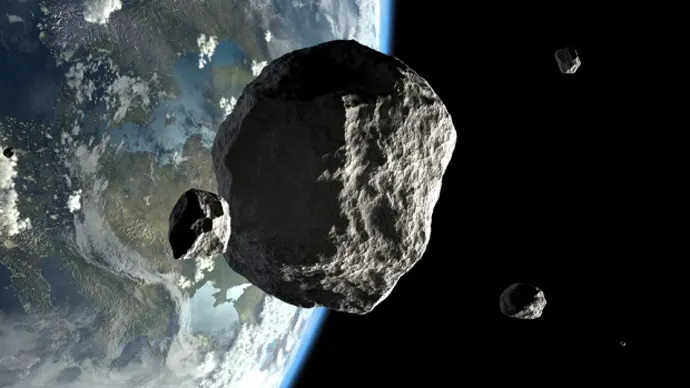
Credit: Shutterstock
To prevent humanity from facing a similar fate someday, NASA and other space agencies have been busy trying to locate all the asteroids that could pose a threat to us. In addition, they are engaged in what's known as planetary defence. Essentially, if they find an asteroid that is going to hit Earth, they want to have ways of changing that asteroid's trajectory, so that it misses us instead.
Missions like OSIRIS-REx and Hayabusa 2 recently visited asteroids, to study them and give us an idea of what we're up against. (Neither of the asteroids they studied are of any threat to us, though.) Scientists are sure to be poring over the data collected by these spacecraft for years to come.
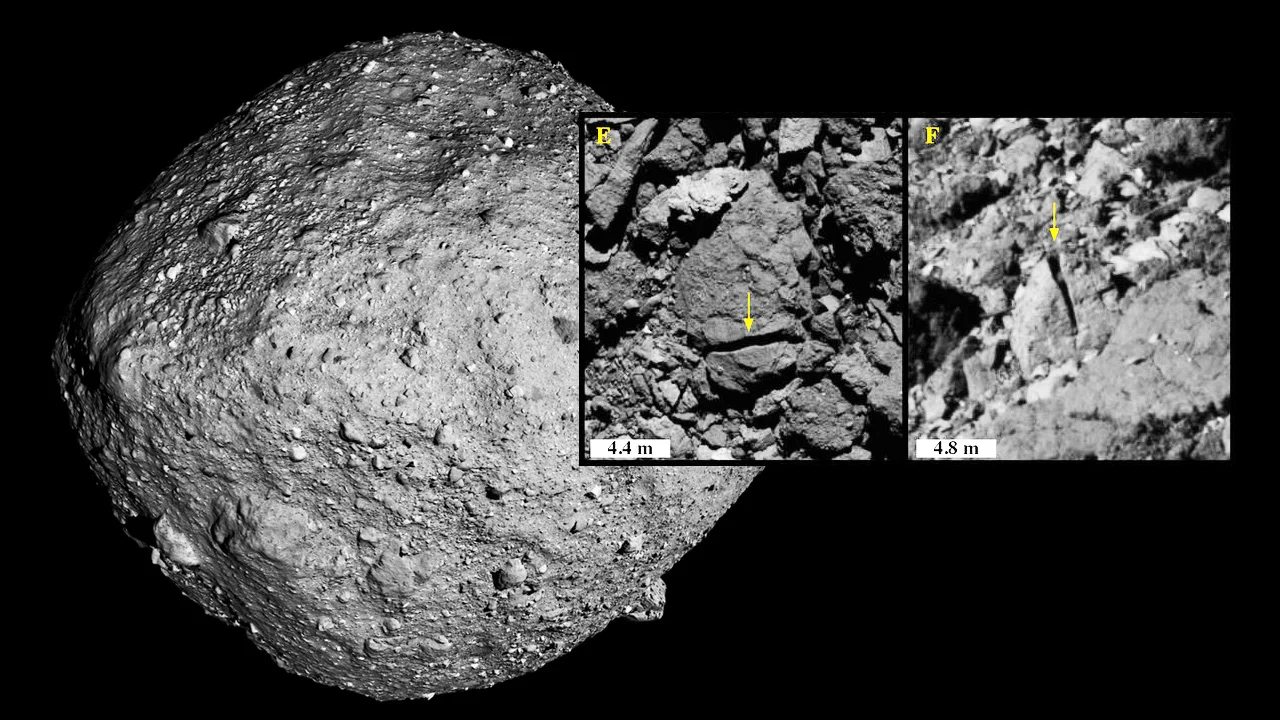
This image of asteroid Bennu from NASA's OSIRIS-REx mission shows fracturing of the surface rocks by sunlight. Credit: NASA Goddard/University of Arizona
DART and Didymos-Dimorphos
Now DART comes in.
"At its core, DART represents an unprecedented success for planetary defense, but it is also a mission of unity with a real benefit for all humanity," NASA Administrator Bill Nelson said in a press release. "As NASA studies the cosmos and our home planet, we're also working to protect that home, and this international collaboration turned science fiction into science fact, demonstrating one way to protect Earth."
Launching in November 2021, the DART mission had one purpose — as a kinetic impactor test.
There are plenty of ideas for dealing with dangerous asteroids. A popular one in science fiction has been the use of nuclear weapons to destroy the space rock. Depending on how long we have until the asteroid would reach us, we may not need to resort to such drastic methods, though.
The principle of a kinetic impactor is simple enough. It is just a physical object that you smash into the asteroid at high speed. The result, hopefully, is that the asteroid is pushed into a different trajectory though space — one where it flies safely past our planet rather than hitting it.
In the case of DART, NASA crashed the whole spacecraft into 160-m wide Dimorphos.

This infographic shows the stages of the DART mission, from approach, to impact, to the potential change in orbit for the target asteroid. Credit: NASA/Johns Hopkins APL
The purpose is to see if slamming a 570-kilogram object, travelling at a speed of 24,000 km/h, is enough to divert Dimorphos in its orbit around Didymos.
This pair was specifically chosen for this test because even though they come close enough to Earth to get a spacecraft there quickly, the asteroids pose no direct threat to us. Also, Dimorphos is fairly small, and it's in a safe and relatively slow orbit around Didymos. So, it shouldn't take much of a hit to change its orbit.
As an added bonus, if DART does succeed in changing Dimorphos' orbit, that won't change the relative threat to Earth from the pair. We'll still be safe from them for the foreseeable future.

The last full image taken by DRACO of asteroid moonlet Dimorphos, roughly 2 seconds and 12 kilometres from impact. The image shows a patch of the asteroid that is 31 m across. Dimorphos' north is toward the top of the image. Credit: NASA/Johns Hopkins APL
However, if astronomers do notice a change in the asteroid moon's orbit, that will provide the planetary defenders at NASA with crucial information for the future. What they learn could be what saves us from the same fate as the dinosaurs.
"Planetary Defense is a globally unifying effort that affects everyone living on Earth," Thomas Zurbuchen, associate administrator for the Science Mission Directorate, said in the press release on Monday. "Now we know we can aim a spacecraft with the precision needed to impact even a small body in space. Just a small change in its speed is all we need to make a significant difference in the path an asteroid travels."
